Abstract
1. The breathing pattern, that is the changes in tidal volume (VT), and in inspiratory (TI) and expiratory (TE) durations, has been studied as ventilation increases in exercise. 2. Five healthy subjects were studied in steady-state exercise on a bicycle ergometer, breathing air, at two speeds of pedalling and at six different loads. The pattern was recorded for single breaths. Two of the subjects were also studied while walking on a treadmill with four combinations of speed and gradient. 3. In bicycle exercise, as the CO2 output increased mean VT increased, and mean TI and TE decreased, the absolute decrease in TI being small. The pedalling speed did not affect these relationships. 4. Individual breath durations showed no tendency to group around multiples of the period of rotation of the pedals. 5. In treadmill exercise, no clear influence of stride rate on respiratory rate could be found. The pattern was similar to that found in bicycle exercise. Again no grouping could be found. 6. No evidence of an effect of frequency of limb movement on breathing pattern in submaximal exercise has been found. The selection of breathing pattern seems to be unrelated to the nature of the stimulus but closely geared to the metabolic needs of the body.
Full text
PDF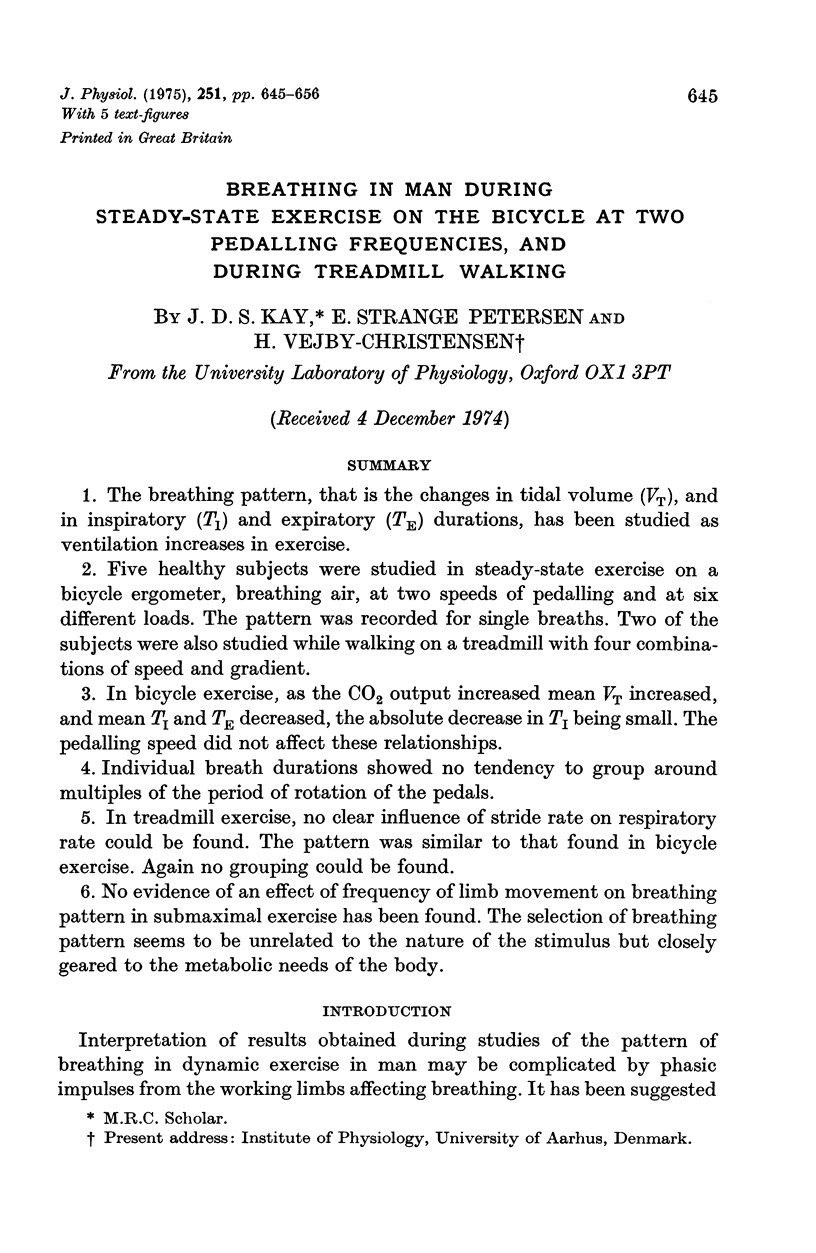
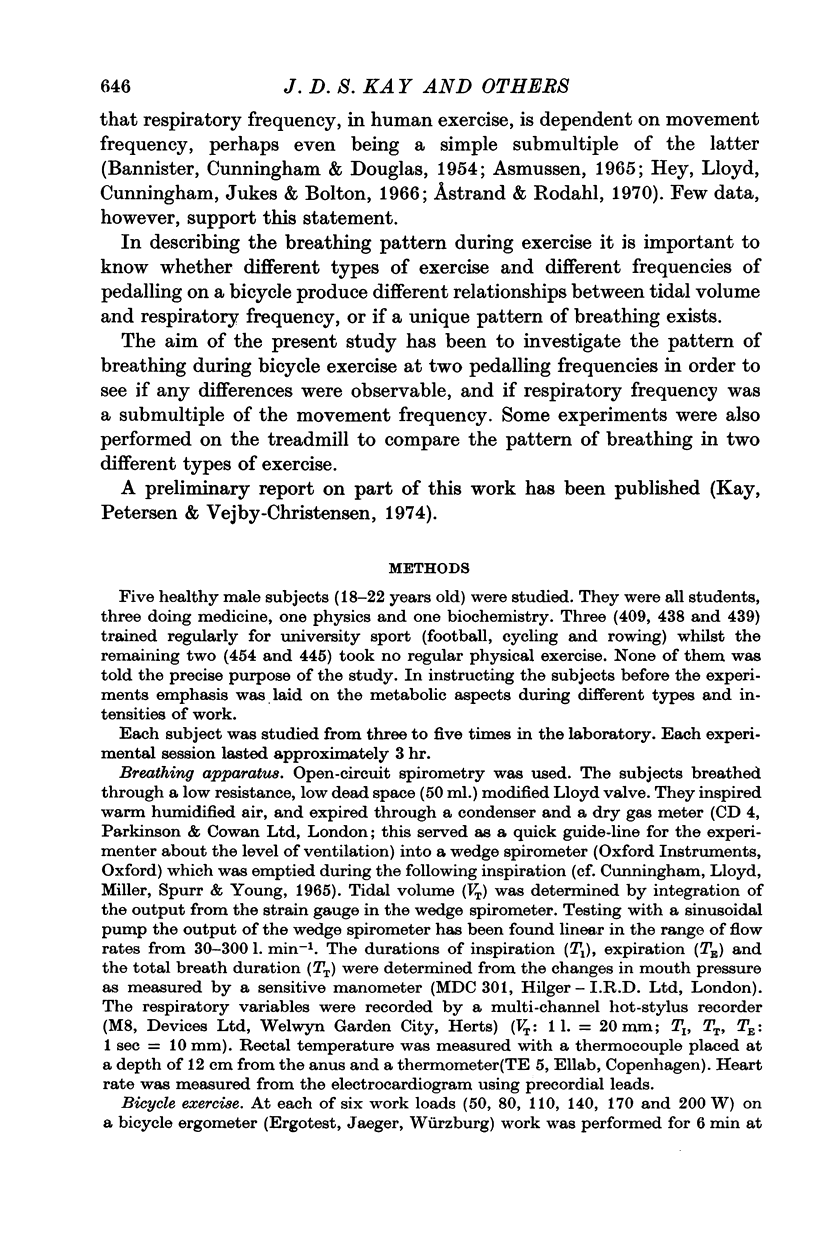
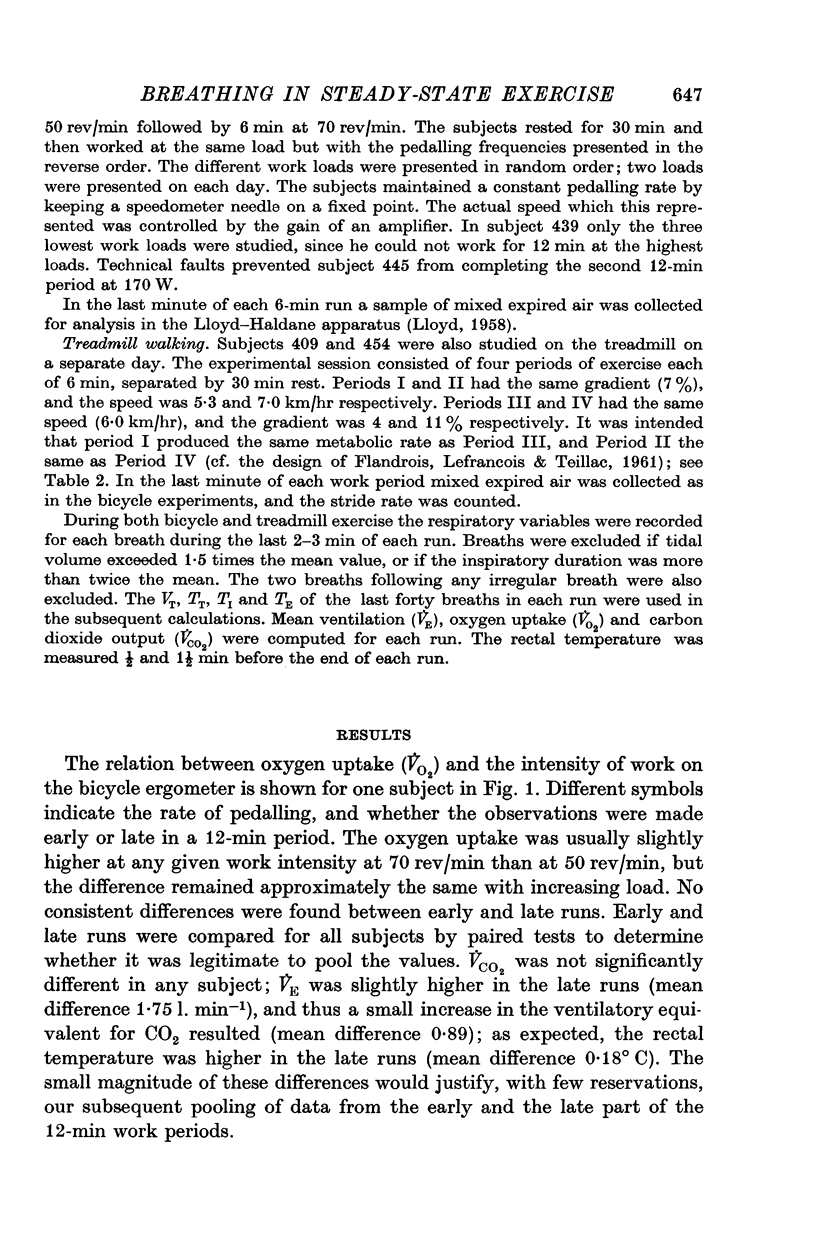
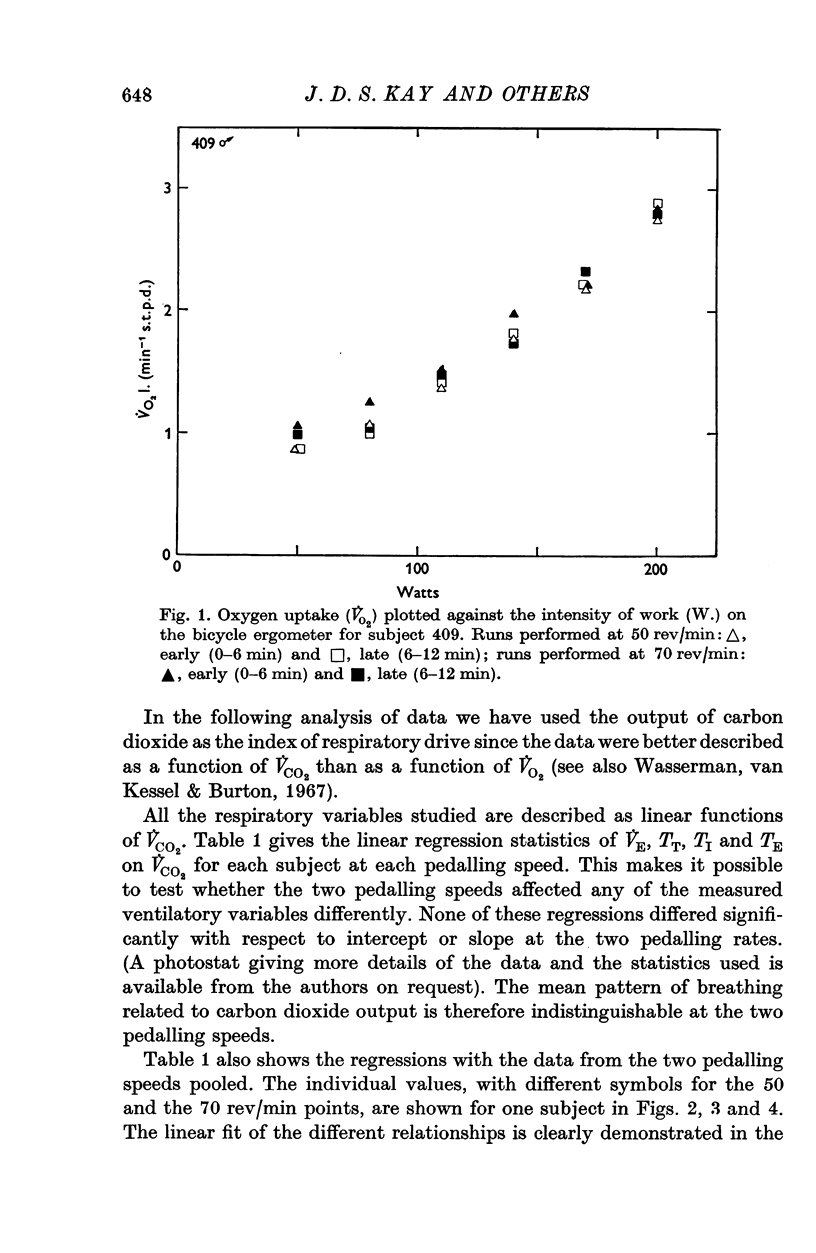
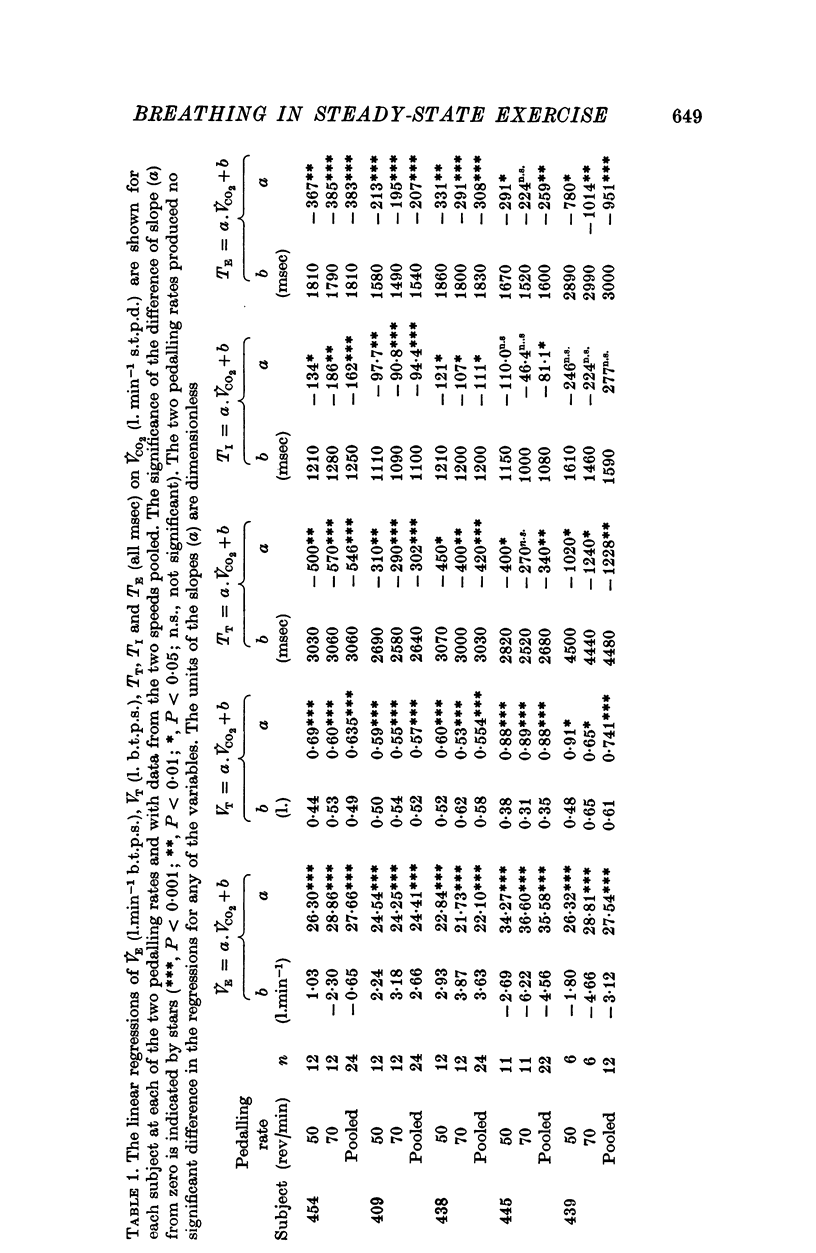
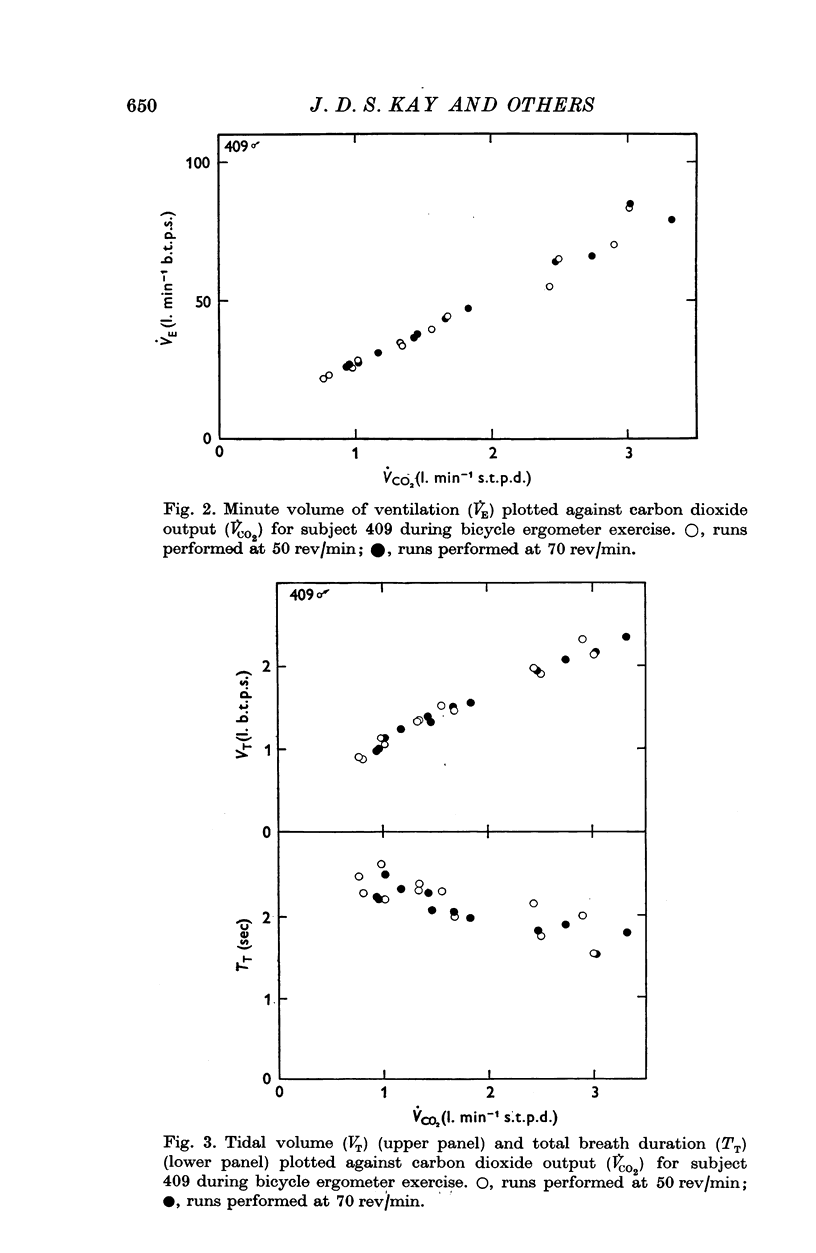
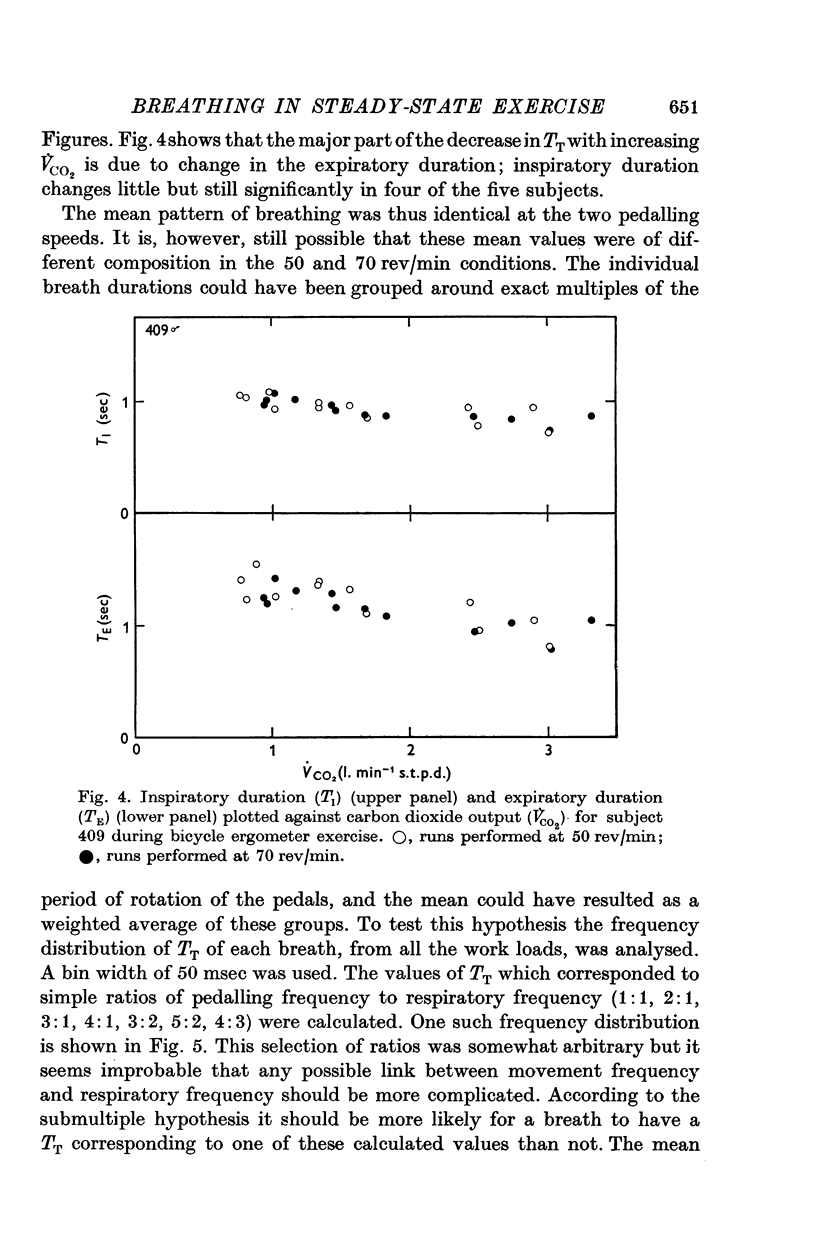
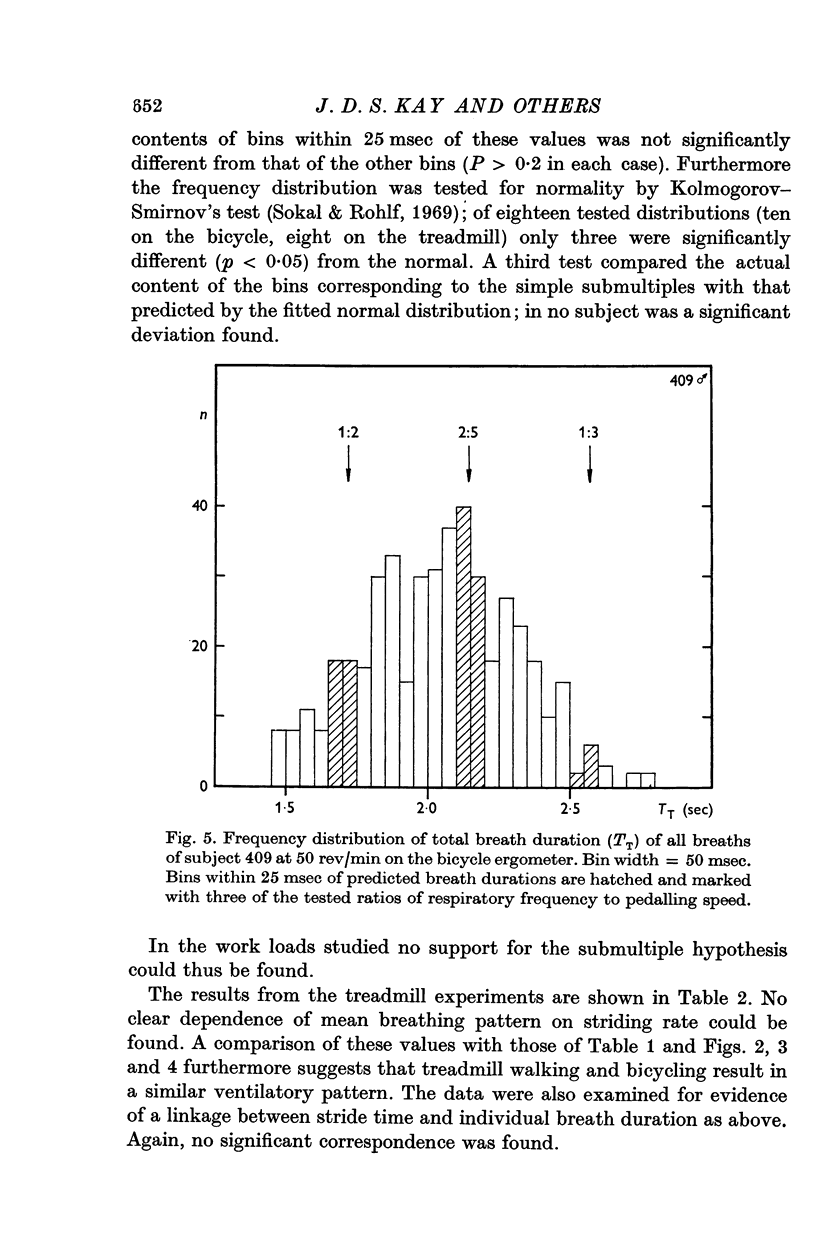

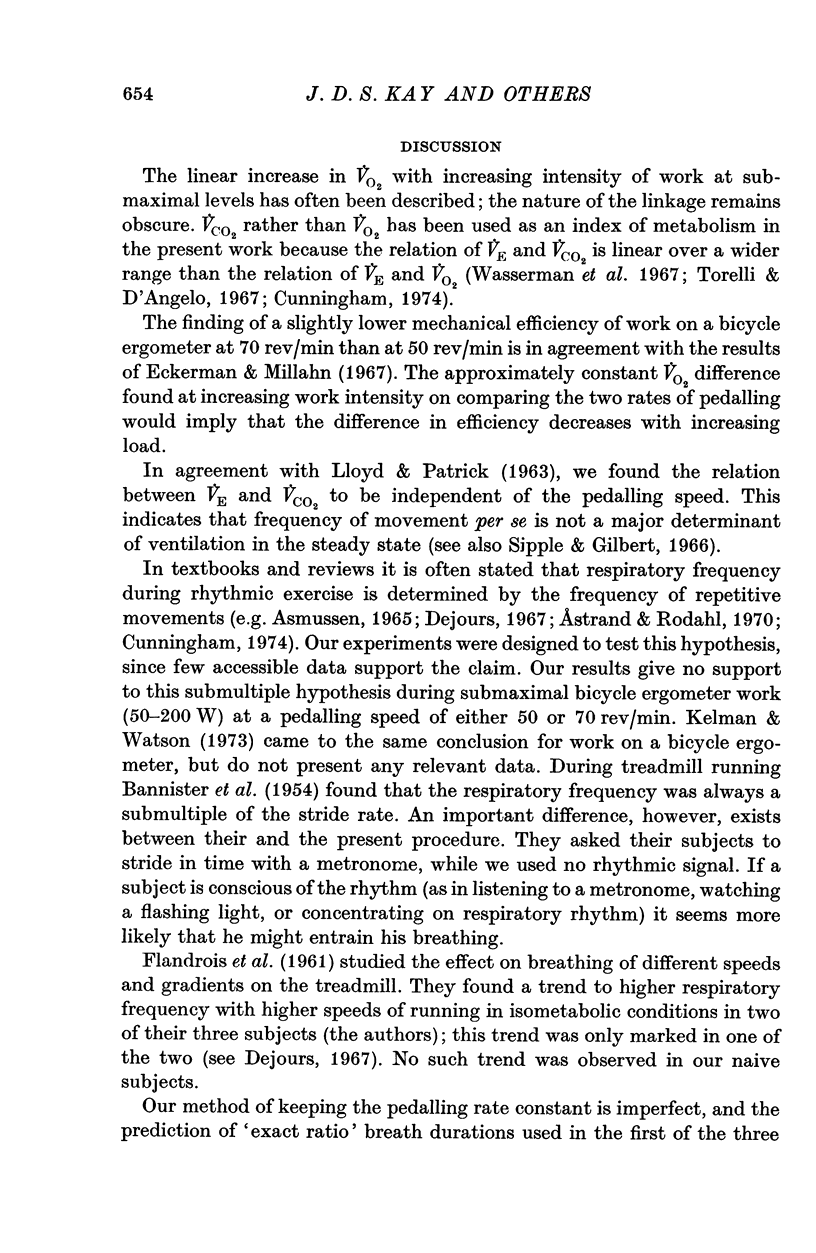
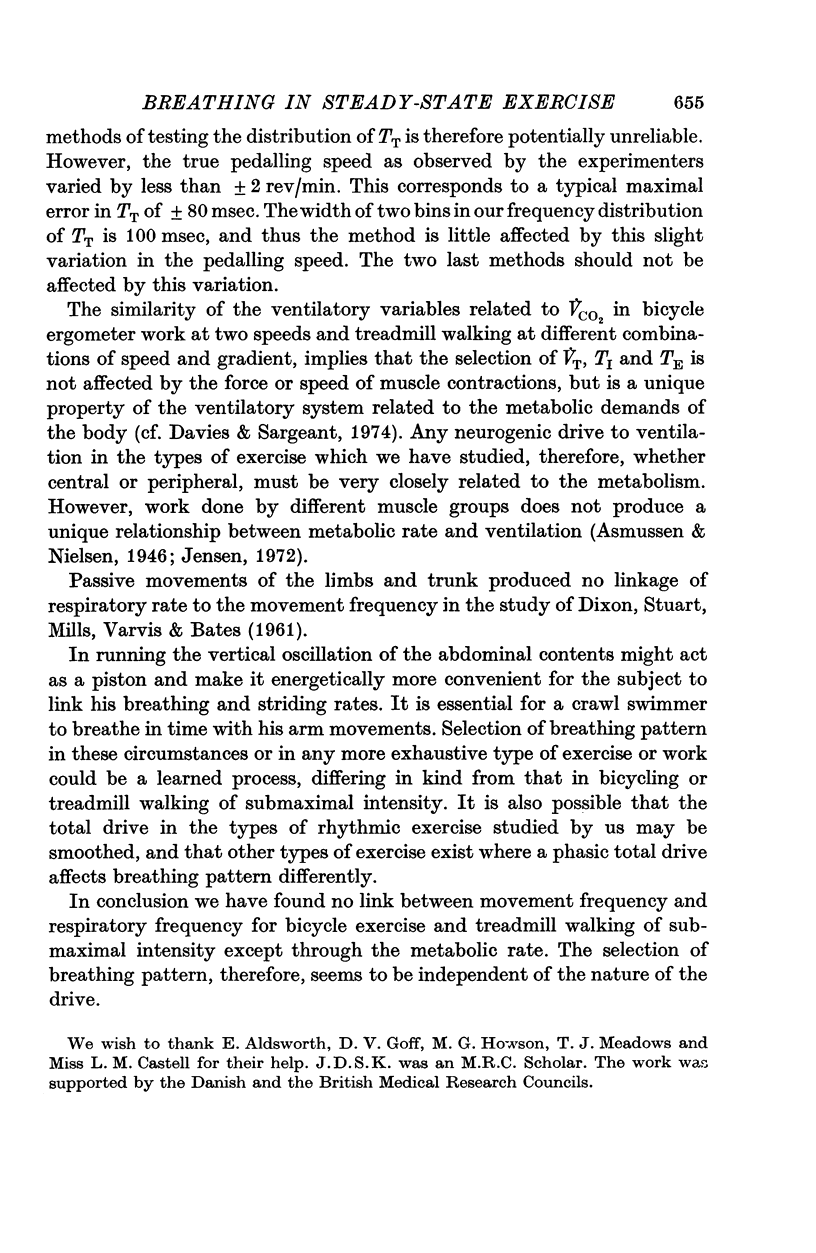
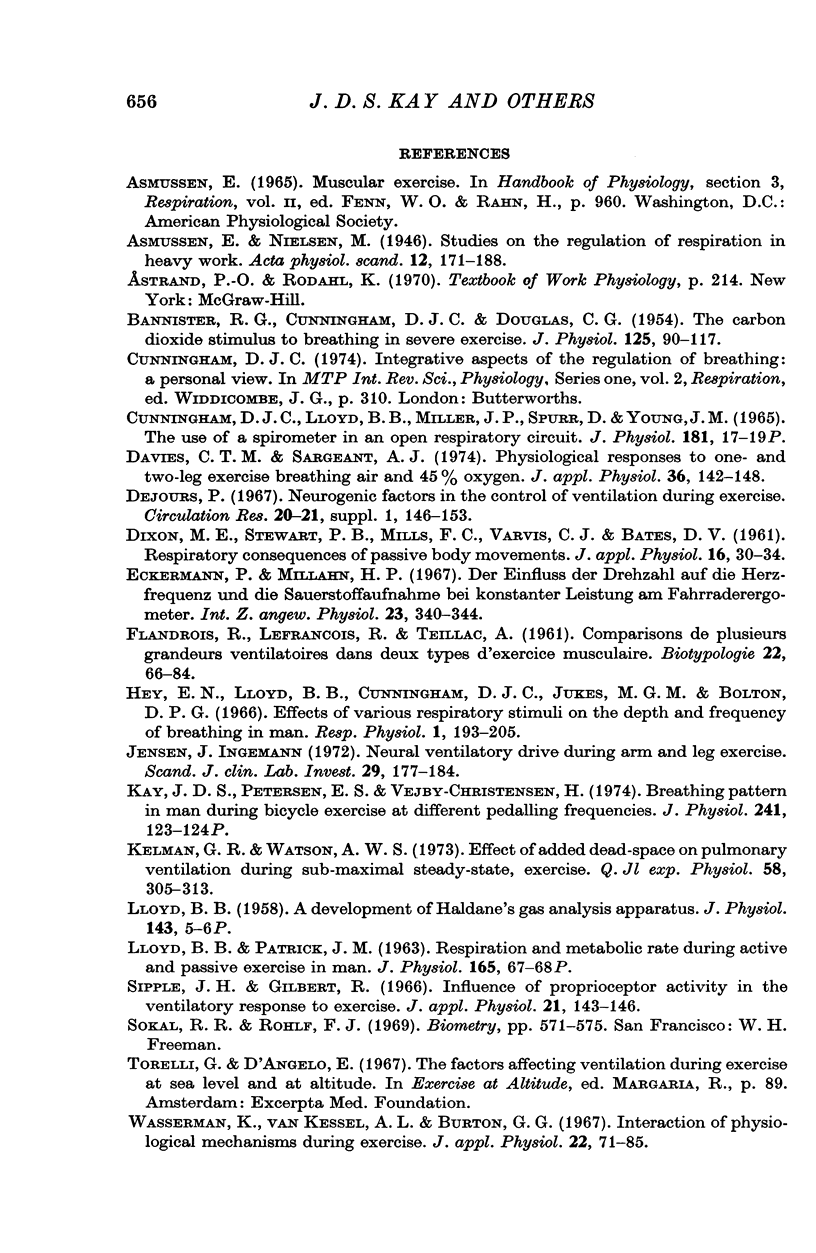
Selected References
These references are in PubMed. This may not be the complete list of references from this article.
- BANNISTER R. G., CUNNINGHAM D. J., DOUGLAS C. G. The carbon dioxide stimulus to breathing in severe exercise. J Physiol. 1954 Jul 28;125(1):90–117. doi: 10.1113/jphysiol.1954.sp005144. [DOI] [PMC free article] [PubMed] [Google Scholar]
- DIXON M. E., STEWART P. B., MILLS F. C., VARVIS C. J., BATES D. V. Respiratory consequences of passive body movement. J Appl Physiol. 1961 Jan;16:30–34. doi: 10.1152/jappl.1961.16.1.30. [DOI] [PubMed] [Google Scholar]
- Davies C. T., Sargeant A. J. Physiological responses to one- and two-leg exercise breathing air and 45 percent oxygen. J Appl Physiol. 1974 Feb;36(2):142–148. doi: 10.1152/jappl.1974.36.2.142. [DOI] [PubMed] [Google Scholar]
- Eckermann P., Millahn H. P. Der Einfluss der Drehzahl auf die Herzfrequenz und die Sauerstoffaufnahme bei konstanter Leistun am Fahrradergometer. Int Z Angew Physiol. 1967 Mar 7;23(4):340–344. [PubMed] [Google Scholar]
- Hey E. N., Lloyd B. B., Cunningham D. J., Jukes M. G., Bolton D. P. Effects of various respiratory stimuli on the depth and frequency of breathing in man. Respir Physiol. 1966;1(2):193–205. doi: 10.1016/0034-5687(66)90016-8. [DOI] [PubMed] [Google Scholar]
- Jensen J. I. Neural ventilatory drive during arm and leg exercise. Scand J Clin Lab Invest. 1972 Apr;29(2):177–184. doi: 10.3109/00365517209081073. [DOI] [PubMed] [Google Scholar]
- Kay J. D., Petersen E. S., Vejby-Christensen H. Proceedings: Breathing pattern in man during bicycle exercise at different pedalling frequencies. J Physiol. 1974 Sep;241(2):123P–124P. [PubMed] [Google Scholar]
- Kelman G. R., Watson A. W. Effect of added dead-space on pulmonary ventilation during sub-maximal, steady-state exercise. Q J Exp Physiol Cogn Med Sci. 1973 Oct;58(4):305–313. doi: 10.1113/expphysiol.1973.sp002224. [DOI] [PubMed] [Google Scholar]
- Sipple J. H., Gilbert R. Influence of proprioceptor activity in the ventilatory response to exercise. J Appl Physiol. 1966 Jan;21(1):143–146. doi: 10.1152/jappl.1966.21.1.143. [DOI] [PubMed] [Google Scholar]
- Wasserman K., Van Kessel A. L., Burton G. G. Interaction of physiological mechanisms during exercise. J Appl Physiol. 1967 Jan;22(1):71–85. doi: 10.1152/jappl.1967.22.1.71. [DOI] [PubMed] [Google Scholar]


